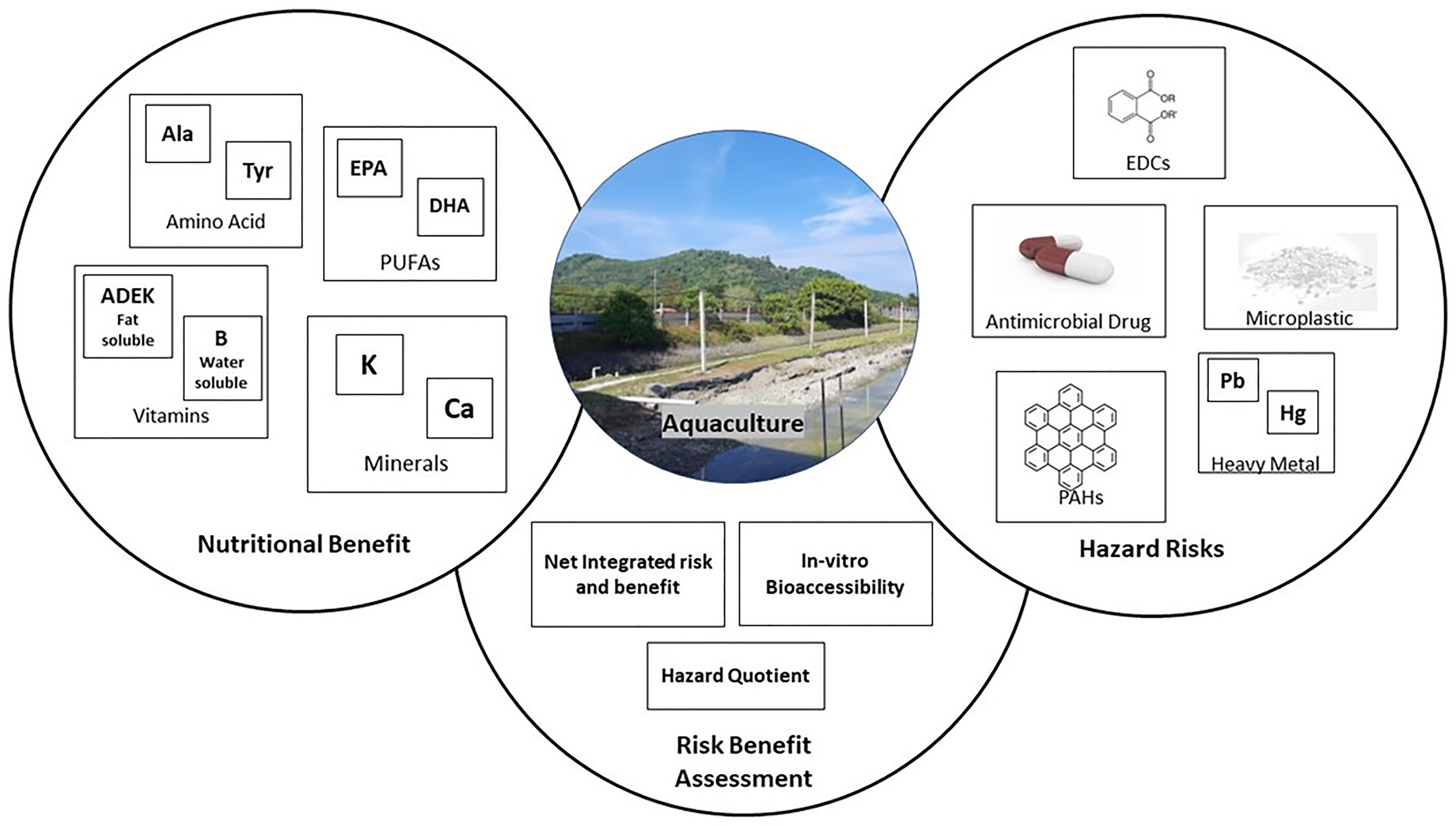Contribution of China’s bivalve aquaculture to world’s essential amino acid production – Nature

Report on the Contribution of China’s Bivalve Aquaculture to Global Protein Supply and the Sustainable Development Goals
Executive Summary
This report assesses the role of China’s bivalve aquaculture in contributing to global food security, focusing on its production of protein and essential amino acids (EAAs) from 2004 to 2023. The findings underscore the industry’s significant alignment with several United Nations Sustainable Development Goals (SDGs), particularly SDG 2 (Zero Hunger), SDG 12 (Responsible Consumption and Production), SDG 13 (Climate Action), and SDG 14 (Life Below Water). Bivalve farming represents a low-impact, high-nutrition food source with substantial potential to meet rising global protein demands sustainably. In 2023, China’s production of 411 thousand tonnes of protein and 72 thousand tonnes of EAAs from bivalves was sufficient to meet the nutritional requirements of millions, highlighting its critical role in building sustainable food systems.
Introduction: The Global Context for Sustainable Protein
The challenge of feeding a growing global population, projected to reach 11 billion by the end of the century, necessitates a transition toward more sustainable food production systems. Traditional animal protein sources, such as livestock farming and wild-capture fisheries, exert significant environmental pressure, contributing to greenhouse gas emissions, land degradation, and the depletion of marine ecosystems. This conflicts directly with the aims of the Sustainable Development Goals. Bivalve aquaculture emerges as a key solution, offering a climate-friendly and resource-efficient method of producing high-quality animal protein.
Alignment with Sustainable Development Goals (SDGs)
- SDG 2 (Zero Hunger): By providing a rich source of protein and essential amino acids, bivalve aquaculture directly addresses the goal of ending hunger, achieving food security, and improving nutrition.
- SDG 12 (Responsible Consumption and Production): As a form of aquaculture that requires no external feed inputs, bivalve farming exemplifies sustainable production patterns and has a minimal environmental footprint.
- SDG 13 (Climate Action): With significantly lower greenhouse gas emissions compared to terrestrial livestock and even other forms of aquaculture, expanding bivalve farming is a viable strategy for climate change mitigation within the food sector.
- SDG 14 (Life Below Water): Promoting sustainable bivalve aquaculture helps reduce pressure on overexploited wild fish stocks, contributing to the conservation and sustainable use of marine resources.
Analysis of Bivalve Production in China (2004-2023)
As the world’s leading producer, accounting for over 85% of global farmed bivalve output, China’s aquaculture sector provides a critical case study. A two-decade analysis reveals significant growth in production and nutritional output.
Overall Production Trends
- Total annual production increased by over 50%, from 9.51 million tonnes in 2004 to 14.95 million tonnes in 2023.
- The primary species cultivated are oysters (38% of total production) and clams (35%).
- Leading production provinces include Shandong (29%), Fujian (21%), and Liaoning (15%).
Protein and Essential Amino Acid (EAA) Production
The growth in total tonnage translated directly into a substantial increase in nutritional output, contributing significantly to food security objectives under SDG 2.
- Protein Production: Farmed bivalve protein output grew by 55%, from 265 thousand tonnes in 2004 to 411 thousand tonnes in 2023.
- EAA Production: The supply of essential amino acids rose by 57%, from 46 thousand tonnes to 72 thousand tonnes over the same period.
- Nutritional Quality: Scallops were identified as having the highest nutritional value, containing superior levels of protein (16.25 g/100g flesh) and EAAs (23.27 g/100g protein) compared to other bivalve species.
Implications for Sustainable Development
The data confirms that bivalve aquaculture is not only a productive food sector but also a powerful tool for advancing global sustainability targets.
Contribution to SDG 2: Zero Hunger and Nutrition
- The 411 thousand tonnes of protein produced in 2023 is sufficient to meet the recommended daily intake for 22.5 million sedentary adults.
- The 72 thousand tonnes of EAAs produced fulfills the complete EAA requirements for 15.36 million individuals.
- This demonstrates a tangible contribution to improving nutrition and ensuring access to safe, nutritious, and sufficient food.
Contribution to SDG 12, 13, and 14: Environmental Sustainability
- Low Carbon Footprint: Bivalve farming generates only 7% of the GHG emissions from global aquaculture while accounting for approximately 20% of its production, making it a highly efficient and climate-friendly system.
- Resource Efficiency: The practice requires no feed, fishmeal, or fish oil, thereby reducing competition for resources and avoiding the environmental degradation associated with feed production.
- Reduced Pressure on Wild Stocks: By providing a scalable alternative to wild-caught seafood, bivalve aquaculture helps conserve marine biodiversity and supports the sustainable management of fisheries.
Conclusion and Strategic Recommendations
China’s bivalve aquaculture sector serves as a global model for sustainable food production, demonstrating a clear pathway to increasing the supply of high-quality protein while supporting key environmental and development goals. Despite its success, significant potential for expansion remains.
Recommendations for Maximizing SDG Impact
- Optimize Species Cultivation: Encourage a strategic shift towards cultivating species with higher protein and EAA content, such as scallops, to maximize the nutritional output per unit of production.
- Promote Sustainable Expansion: Identify and develop suitable coastal areas for bivalve farming, both within China and globally, while ensuring that expansion remains within the ecological carrying capacity of marine environments.
- Foster International Collaboration: Facilitate the transfer of technology and best practices from China to other nations to help build global capacity for sustainable aquaculture, directly supporting the achievement of the SDGs on a wider scale.
- Enhance Data and Research: Invest in more granular, species-specific data collection to refine production estimates and conduct further research into the role of bivalve aquaculture in marine carbon cycling to better quantify its contribution to SDG 13.
Analysis of Sustainable Development Goals in Bivalve Aquaculture
1. Which SDGs are addressed or connected to the issues highlighted in the article?
The article on bivalve aquaculture in China addresses and connects to several Sustainable Development Goals (SDGs) by highlighting its role in nutrition, environmental sustainability, and responsible food production. The following SDGs are relevant:
- SDG 2: Zero Hunger: The core of the article focuses on bivalve aquaculture as a significant source of high-quality protein and essential amino acids (EAAs), directly contributing to food security and improved nutrition for a growing global population.
- SDG 3: Good Health and Well-being: By quantifying the production of protein and EAAs, the article underscores the nutritional benefits of bivalves, which are essential for human growth, health, and physiological functions. It mentions that bivalves also contain other beneficial compounds like omega-3 fatty acids.
- SDG 12: Responsible Consumption and Production: The article presents bivalve farming as a sustainable production system. It contrasts its low environmental impact (low carbon footprint, no feed inputs) with more resource-intensive food sources like livestock and other forms of aquaculture, promoting a shift towards more sustainable consumption and production patterns.
- SDG 13: Climate Action: The discussion on the low greenhouse gas (GHG) emissions of bivalve aquaculture compared to other animal protein sources directly relates to mitigating climate change. The article also touches upon the potential of bivalve farming to act as a carbon sink.
- SDG 14: Life Below Water: The article positions sustainable bivalve aquaculture as an alternative to wild-capture fisheries, which are constrained by overexploited fish stocks. This promotes the sustainable use of marine resources and helps conserve marine ecosystems.
2. What specific targets under those SDGs can be identified based on the article’s content?
Based on the article’s content, several specific SDG targets can be identified:
- Under SDG 2 (Zero Hunger):
- Target 2.1: End hunger and ensure access to safe, nutritious, and sufficient food. The article directly supports this by quantifying how bivalve production in China can meet the protein needs of 22.5 million people and the EAA requirements of 15.36 million people.
- Target 2.2: End all forms of malnutrition. The study’s focus on the quality of protein, specifically the high levels of essential amino acids (EAAs) in bivalves like scallops, addresses the need for nutrient-rich food to combat malnutrition.
- Target 2.4: Ensure sustainable food production systems. The article explicitly describes bivalve aquaculture as a “key component of sustainable food systems” due to its environmental friendliness and lack of reliance on external feed inputs.
- Under SDG 12 (Responsible Consumption and Production):
- Target 12.2: Achieve the sustainable management and efficient use of natural resources. The article highlights the efficiency of bivalve farming, which produces high-quality protein with a low carbon footprint and without the need for feed, representing a more sustainable use of natural resources compared to terrestrial livestock.
- Under SDG 13 (Climate Action):
- Target 13.2: Integrate climate change measures into national policies, strategies and planning. The article provides evidence for bivalve farming as a low-carbon food source (1.2 Mt CO2e per Mt of production), making it a viable strategy for countries to integrate into their food security and climate action plans.
- Under SDG 14 (Life Below Water):
- Target 14.4: End overfishing and restore fish stocks. By presenting bivalve aquaculture as a rapidly growing sector, the article offers a solution to reduce pressure on wild fish stocks, which are noted to be “overexploited (>90% of stocks are overfished)”.
- Target 14.7: Increase economic benefits from the sustainable use of marine resources, including aquaculture. The article demonstrates the massive scale of China’s bivalve production (14.95 million tonnes annually) and suggests that expanding this model through “international collaborations” could increase benefits for other coastal nations.
3. Are there any indicators mentioned or implied in the article that can be used to measure progress towards the identified targets?
Yes, the article provides several quantitative indicators that can be used to measure progress towards the identified targets:
- For SDG 2 (Food Security and Nutrition):
- Total protein production: The article states that China’s bivalve aquaculture produced 411 thousand tonnes of protein in 2023. This is a direct indicator of food supply.
- Total Essential Amino Acid (EAA) production: The production of 72 thousand tonnes of EAAs in 2023 serves as an indicator of nutritional quality.
- Nutritional content of food: Specific values are given for protein content (e.g., scallops at 16.25 g/100g flesh) and EAA content (e.g., scallops at 23.27 g/100g protein), which can be used to track the nutritional quality of the food supply.
- For SDG 12 & 13 (Sustainable Production and Climate Action):
- Greenhouse gas emissions from food production: The article provides a comparative indicator of carbon footprint: 1.2 Mt CO₂e per Mt for bivalves, versus 2.4–4.3 for fish and 6.7–7.5 for shrimp. This metric measures the climate impact of different production systems.
- For SDG 14 (Life Below Water):
- Aquaculture production volume: The increase in China’s farmed bivalve production from 9.51 million tonnes in 2004 to 14.95 million tonnes in 2023 is a key indicator of the growth of sustainable marine resource use.
- Proportion of overfished stocks: The statistic that “>90% of [wild fish] stocks are overfished” serves as a baseline indicator against which the benefits of shifting to aquaculture can be measured.
- Potential for sustainable expansion: The mention that “most countries utilizing less than 1% of suitable areas” for bivalve farming implies an indicator related to the untapped potential for sustainable marine aquaculture.
4. Table of SDGs, Targets, and Indicators
| SDGs, Targets and Indicators | Targets | Indicators |
|---|---|---|
| SDG 2: Zero Hunger |
|
|
| SDG 3: Good Health and Well-being |
|
|
| SDG 12: Responsible Consumption and Production |
|
|
| SDG 13: Climate Action |
|
|
| SDG 14: Life Below Water |
|
|
Source: nature.com

What is Your Reaction?
 Like
0
Like
0
 Dislike
0
Dislike
0
 Love
0
Love
0
 Funny
0
Funny
0
 Angry
0
Angry
0
 Sad
0
Sad
0
 Wow
0
Wow
0













































































